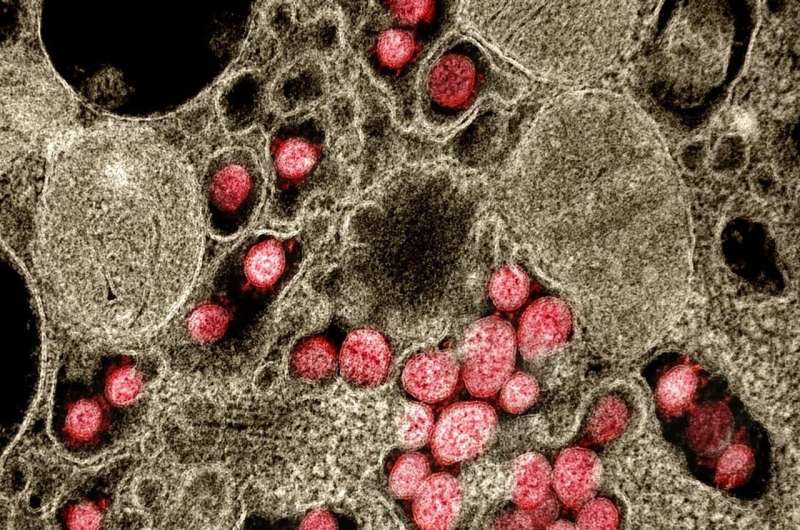Transmission electron micrograph of SARS-CoV-2 virus particles isolated from a patient. Credit: NIAID
A new computational study suggests that a protein present in SARS-CoV-2, the virus that causes COVID-19, could be a target for future vaccines. The study is published ahead of print in the American Journal of Physiology—Lung Cellular and Molecular Physiology.
Increased inflammation that leads to a "cytokine storm"—in which the body attacks its own tissues—is a serious complication affecting many people with COVID-19. SARS-CoV, the virus that caused a global outbreak of severe acute respiratory syndrome in Asia in 2003, encodes three viral membrane proteins—called viroporins—that play a role in activating inflammatory responses of the immune system. Previous studies have shown that the Viroporin E of SARS-CoV-2 has 94.7% similarity with the Viroporin E of SARS-CoV, which increases the probability that the two proteins have similar functions. Additionally, it was found that mutations in one region of the SARS-CoV-2 E protein could provide the basis for live, weakened and inactivated vaccines.
The researchers of a new study used the Universal Protein Resource database to obtain the Viroporin E sequence of SARS-CoV-2 for in silico (computer-based) analysis. Computer modeling has "changed the field of vaccinology, providing a time- and cost-effective strategy that aims at very focused, evidence-directed experimental investigation," the researchers of the new study wrote.
The Viroporin E of SARS-CoV-2 was identified as a "probable antigen"—a substance that is likely to trigger an immune response in the body. The predicted vaccine epitope candidates—the part of the antigen recognized by the immune system—were also found to fulfill prerequisites for vaccine safety. These findings "indicate that the SARS-CoV-2 viroporin E could serve as a promising vaccine target for this devastating disease," the researchers wrote. However, "experimental data are required to validate the in silico estimates."
"In silico investigation of the Viroporin E as a vaccine target against SARS-CoV-2" ispublished ahead of print in the American Journal of Physiology-Lung Cellular and Molecular Physiology.
More information: Erasmia Rouka et al. In Silico investigation of the viroporin E as a vaccine target against SARS-CoV-2, American Journal of Physiology—Lung Cellular and Molecular Physiology (2021). DOI: 10.1152/ajplung.00443.2020
Provided by American Physiological Society
























